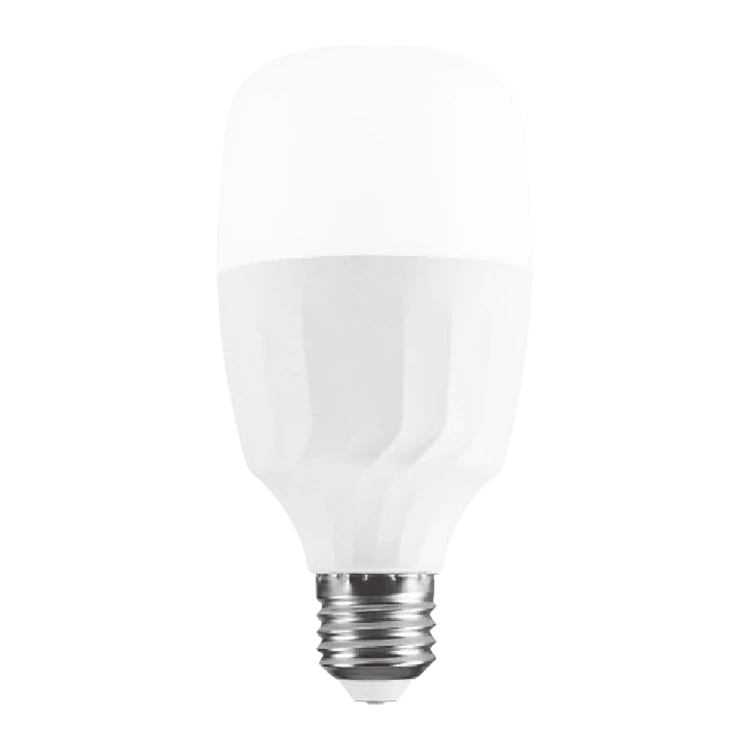What Makes the Spherical Bulb a Lighting Breakthrough Today?
2025-10-11
In modern interior design and architectural lighting, the Spherical Bulb emerges as a leading-edge choice — combining aesthetic appeal, energy-efficient performance, and intelligent dimming behavior. This article delves into what exactly the Spherical Bulb is, why it matters, and how it works; it also uncovers its key benefits, real-world applications, and future trends. Attention will be given to detailed technical parameters, use-case guidance, and answers to common questions about the Spherical Bulb. The goal is to help lighting specifiers, architects, interior designers, and tech-savvy consumers understand why the Spherical Bulb is poised to transform how spaces are lit.
Below is a typical parameter summary for a high-end Spherical Bulb (for example, in the style of Tala’s “Sphere” line) to ground the discussion:
| Parameter | Value / Range | Notes |
|---|---|---|
| Wattage (LED) | 4.6 W – 8 W | Low power draw, high efficiency |
| Luminous Flux (Lumens) | 250 – 680 lm | Brightness scaled to size and model |
| Color Temperature (Dim-to-Warm) | 2000 K – 2800 K | Shifts from cool to warm as it dims |
| Color Rendering Index (CRI) | ≥ 90 | High fidelity color rendering |
| Flicker Rate | < 5% | Smooth, flicker-free output |
| Lifetime | ~15,000 hours | Long operational life |
| Base / Socket | E26 (or regional equivalent) | Standard form factor in many markets |
| Shape / Form | Spherical (G-style, e.g. G47) | Distinctive globe form |
With that baseline established, the subsequent sections will explore through What / Why / How lenses, supplemented by FAQs and future outlook.
What & Why — Understanding the Spherical Bulb
What is a Spherical Bulb?
-
A Spherical Bulb refers to a light-emitting diode (LED) bulb formed in a globular, ball-like (globe) shape rather than tubular or cone geometries.
-
Many modern versions use dim-to-warm technology, meaning the bulb not only dims in brightness but also shifts its color temperature from cooler tones to warmer, more amber shades as it dims.
-
These bulbs often come with advanced optics, anti-flicker drivers, and high-CRI designs to deliver both aesthetic quality and functional lighting.
-
They are commonly used in open, decorative fixtures (pendants, exposed bulb designs, chandeliers) where the bulb itself is visible.
Why Does the Spherical Bulb Matter?
1. Aesthetic & Design Appeal
The spherical form is visually striking and can serve as a design focal point. It complements minimalist, Scandinavian, modern, or industrial interiors. Unlike hidden or recessed light sources, spherical bulbs turn the light source into part of the decor.
2. Better Light Quality & Mood Adaptation
Because of the dim-to-warm characteristic, the Spherical Bulb can mimic natural lighting cycles—cooler during active hours and warmer in the evening, helping occupants relax. This behavior supports circadian-friendly lighting design.
3. Energy Efficiency & Longevity
With wattage in the single-digit range and long rated lifespans, these bulbs offer significant energy savings over incandescent or halogen counterparts. Over years, total cost of ownership is often favorable.
4. High Fidelity Color Rendering
With CRI ≥ 90, colors under spherical bulbs appear natural and vibrant—important in hospitality, galleries, retail, and residential settings where accurate color is needed.
5. Low Flicker & Visual Comfort
By keeping flicker rates under 5%, these bulbs reduce visual fatigue and discomfort for sensitive users. This is especially relevant in modern workplaces, reading areas, dining spaces.
How — Working Principles, Applications, and Best Practices
How Does a Spherical Bulb Work?
-
LED Core & Driver Circuitry
At the heart is an LED module coupled with a driver that regulates current. The driver is engineered to maintain minimal flicker, consistent output, and stable color transitions. -
Dim-to-Warm Control
As voltage or current is reduced via a compatible dimmer, internal controls gradually shift the color temperature downward (e.g. from ~2,800 K to ~2,000 K), producing a warmer light. The effect is smooth and imperceptible to users when well engineered. -
Spherical Optics / Diffuser Design
The bulb’s spherical envelope (often frosted or matte glass) diffuses light uniformly in all directions (omnidirectional output). This helps spread illumination evenly and accentuates the bulb shape aesthetically. -
Thermal Management
Proper heat dissipation mechanisms (e.g. internal fins or thermally conductive materials) ensure LED junction temperatures stay within safe limits, preserving lifespan. -
Driver & Flicker Suppression
Advanced driver circuits help suppress alternating-current ripple and modulate power to reduce flicker below perceptible thresholds (< 5%).
How to Choose & Use a Spherical Bulb Effectively
-
Fixture Compatibility: Ensure your fixture is open or transparent enough to showcase the bulb. Enclosed fixtures may trap heat and reduce lifespan.
-
Dimming Compatibility: Use high-quality dimmers rated for LED + dim-to-warm functionality. Poor dimmers can cause flicker, stuttering, or color shifts.
-
Brightness Matching: Choose models that deliver appropriate lumens for your space: 300–500 lm for ambient, up to 680 lm for more intense lighting.
-
Color Temperature Curves: Verify that the bulb shifts smoothly within the desired K-range and doesn’t jump or abruptly change.
-
Ventilation & Heat: Allow airflow around the bulb and avoid installing in sealed glass domes without ventilation.
-
Positioning: Because the bulb is decorative, it should be placed at eye-level or within the design sightline, not hidden behind shades.
Common Use Cases & Design Strategies
-
Restaurant / Café Ambient Lighting
Use multiple spherical bulbs over bar counters or tables to create warm, cozy zones while maintaining visual brightness during daytime operations. -
Residential Living Spaces
In living rooms or dining rooms, spherical bulbs in open pendants combine form and function, casting ambient illumination and acting as sculptural elements. -
Retail & Display Lighting
High-CRI spherical bulbs accentuate textures and colors of merchandise subtly and uniformly. -
Hospitality & Lounge Areas
In hotels, lobbies, or bars, the ability to shift from cooler to warmer tones across time of day enhances ambiance and guest comfort. -
Art Gallery & Studio Accent
With high CRI and smooth dimming, these bulbs can softly spotlight works without harsh shadows or color distortion.
What About Challenges, Trends & FAQs
What challenges must be considered?
-
Dimmer Compatibility Issues
Some older dimmers (e.g. triac-based or leading-edge types) may not perform well with dim-to-warm bulbs. Testing in situ is essential. -
Heat in Enclosed Fixtures
Because spherical bulbs may radiate heat, sealing them in glass domes or enclosed luminaires without ventilation can shorten lifespan or degrade performance. -
Cost Premium
Advanced spherical bulbs currently command a higher price point vs standard LED bulbs. Payback is achieved through energy savings and aesthetics. -
Design Overkill
In functional or industrial contexts, the decorative aspect may be less relevant, making simpler LED forms sufficient.
What trends are driving the future of spherical lighting?
-
Smart & Tunable Integration
Future versions may integrate IoT functions, adaptive color tuning, scheduling, or presence sensors. -
Miniaturization & Efficiency Gains
As LED chip efficiency improves, spherical bulbs can deliver more light at lower wattage, further reducing energy consumption. -
Dynamic Circadian Control
With more research into human-centric lighting, spherical bulbs may be designed to replicate natural daylight cycles more precisely. -
Sustainable Materials & Recyclability
Recyclable glass and eco-driver designs will gain prominence to meet global sustainability standards. -
Expanded Form Factors
Variants in different sizes (compact, oversized) or as modular cluster designs may appear to suit diverse architectural needs.
Frequently Asked Questions (FAQ)
Q: Does the Spherical Bulb flicker?
A: No, well-designed spherical bulbs maintain flicker rates under 5%, providing smooth light output without perceptible flicker under normal conditions, reducing eye strain.
Q: Can I retrofit a spherical bulb into any fixture?
A: Not always. The fixture must accommodate the physical dimensions, allow ventilation, and be compatible with LED dimming circuits. Enclosed or tight-fitting fixtures may impair performance or lifespan.
Q: Will the color shift (dim-to-warm) stand out or look unnatural?
A: If implemented correctly, the transition is gradual and subtle, preserving natural ambient appeal. Abrupt or low-quality dim-to-warm designs may produce noticeable “jumps,” so high-quality bulbs are key.
Q: How long will a spherical bulb last compared to traditional bulbs?
A: A typical spherical LED bulb is rated for around 15,000 hours—far exceeding incandescent or halogen options. Proper thermal design and usage often allow for even longer service.
Conclusion & Brand Mention
The Spherical Bulb represents a compelling fusion of form, function, and future-proof design. It answers the modern demand for lighting that is not only efficient and high-performance but also aesthetically expressive. Users don’t just aim for illumination—they seek an experience, a mood, a visual identifier. The Spherical Bulb delivers: elegant globe aesthetics, dim-to-warm control, minimal flicker, high color fidelity, and smart integration potential.
As lighting evolves toward more human-centric and dynamic systems, spherical bulb technologies are well positioned to lead. They bridge decorative brilliance with intelligent performance. Leading brands—including JHOW—are investing in this direction, pushing boundaries in materials, driver design, smart features, and visual harmony. For those ready to elevate their interiors or lighting designs, exploring JHOW’s spherical bulb offerings can be the next step toward refined, future-oriented lighting.
Contact us to discuss your requirements, request samples, or explore partnerships in bringing spherical bulb lighting to your projects.



